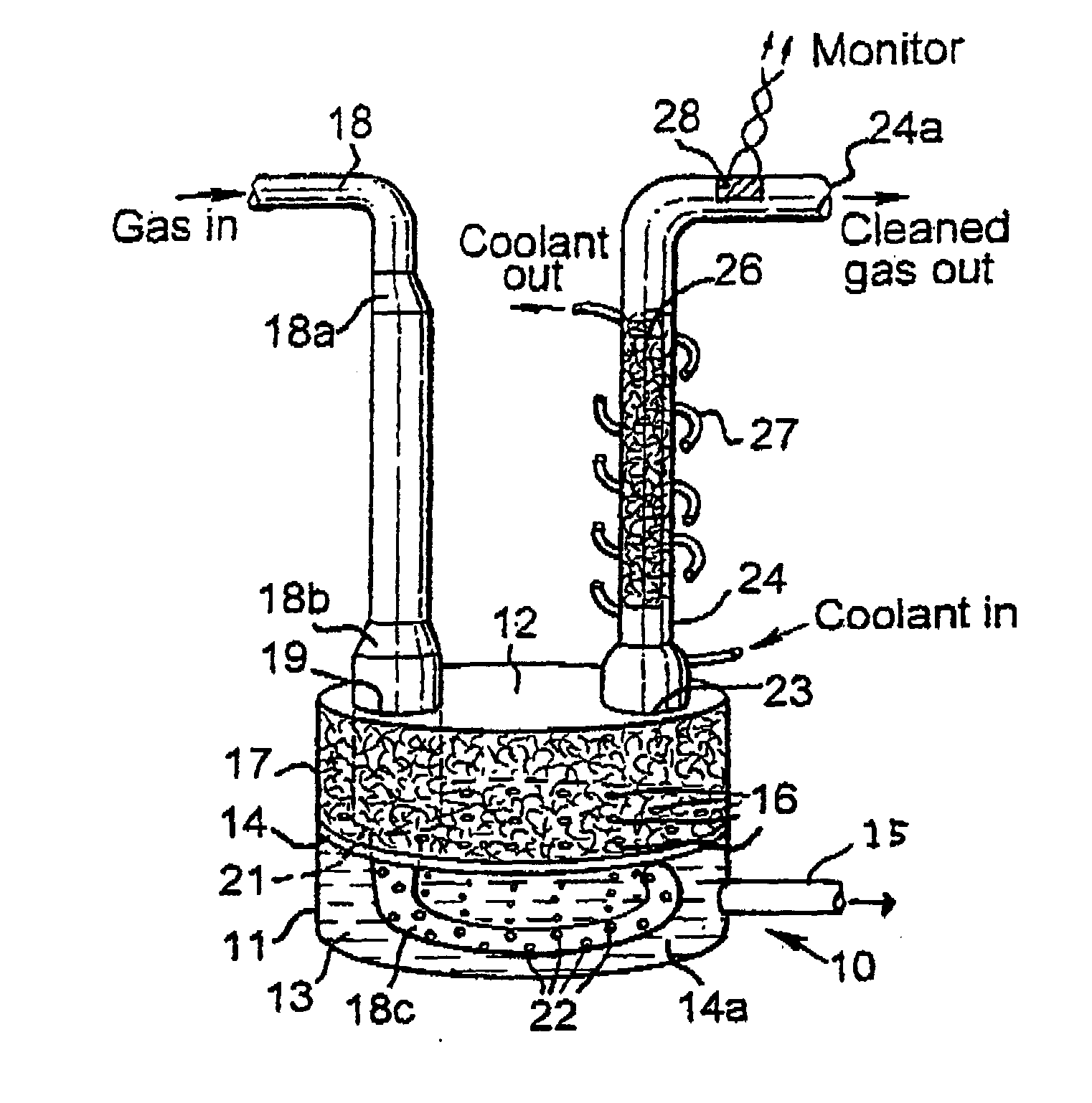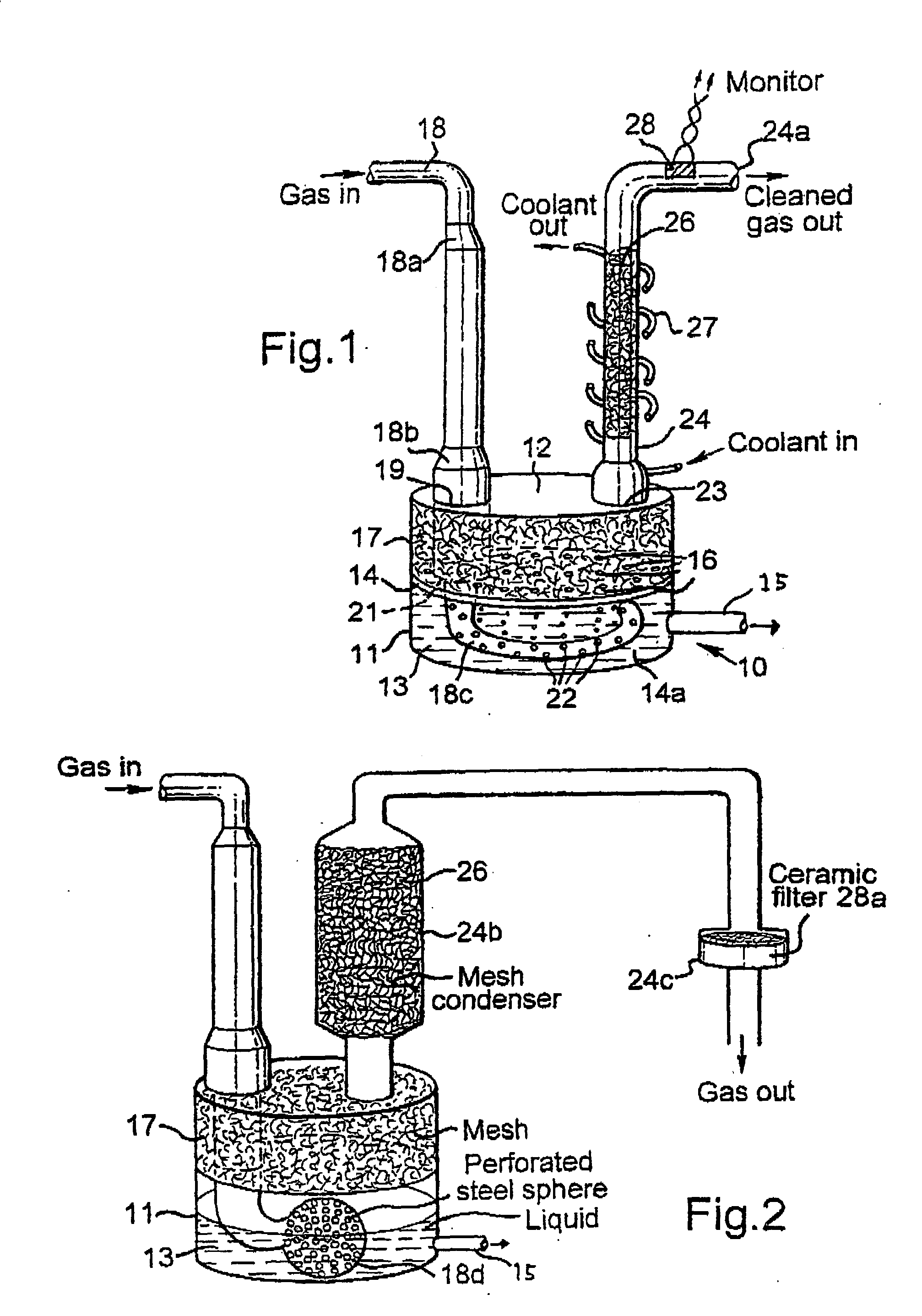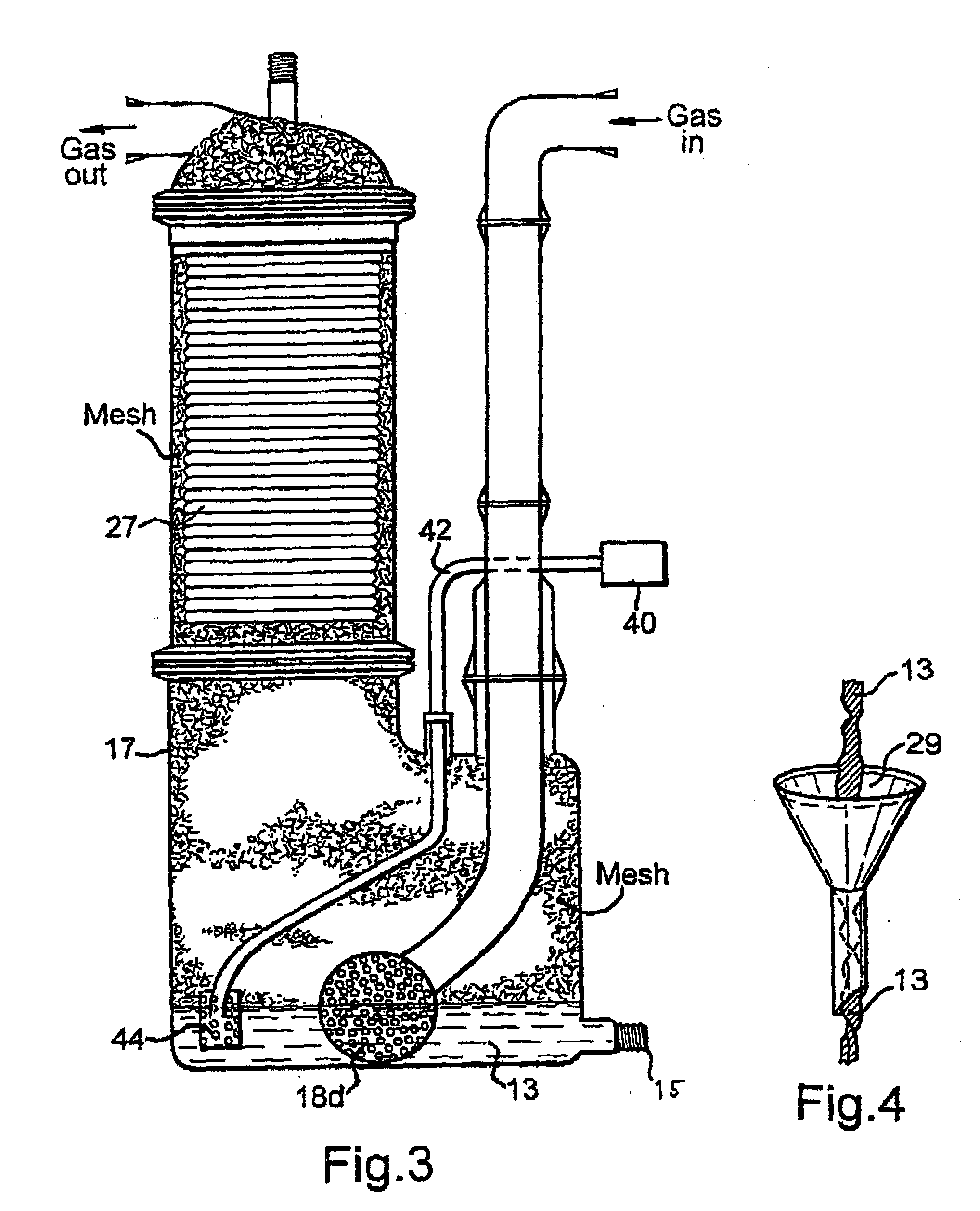Method and apparatus for removing sulfur components
a technology of sulfur components and methods, applied in the direction of using liquid separation agents, climate change adaptation, climate sustainability, etc., can solve the problems of increasing environmental concerns, 60,000 deaths, oxides of nitrogen,
- Summary
- Abstract
- Description
- Claims
- Application Information
AI Technical Summary
Benefits of technology
Problems solved by technology
Method used
Image
Examples
first embodiment
FIG. 1 is a schematic view of apparatus and a method according to the invention;
second embodiment
FIG. 2 is a schematic view of apparatus according to the invention;
third embodiment
FIG. 3 is a schematic view of apparatus according to the invention;
FIG. 4 shows filtering of liquid after use of the apparatus of FIGS. 1, 2 or 3;
FIG. 5 is a schematic flow diagram of processing steps for sulfuric acid production.
FIG. 1 shows an apparatus 10 according to the invention comprising a generally cylindrical container 11 having an open upper end that is sealingly closed by a lid 12.
Container 11 contains a liquid 13 that is, essentially, a 1:50,000 (or other ratio) mix of a liquid detergent (i.e. ARIEL FUTUR® (manufactured by Procter & Gamble)) and water in the embodiment shown. Other detergents may of course be used, in which case the ratio of detergent to water may require adjustment. It is essential only that the liquid 13 is capable of wetting the fine particulates (e.g. those of a diameter less than 0.1 μm) described herein. The detergent / water mixture has been found to be highly successful in this regard.
Liquid 13 may also contain an antifreeze, thereby permitti...
PUM
| Property | Measurement | Unit |
|---|---|---|
| diameter | aaaaa | aaaaa |
| thickness | aaaaa | aaaaa |
| diameter | aaaaa | aaaaa |
Abstract
Description
Claims
Application Information
 Login to View More
Login to View More - R&D Engineer
- R&D Manager
- IP Professional
- Industry Leading Data Capabilities
- Powerful AI technology
- Patent DNA Extraction
Browse by: Latest US Patents, China's latest patents, Technical Efficacy Thesaurus, Application Domain, Technology Topic, Popular Technical Reports.
© 2024 PatSnap. All rights reserved.Legal|Privacy policy|Modern Slavery Act Transparency Statement|Sitemap|About US| Contact US: help@patsnap.com










